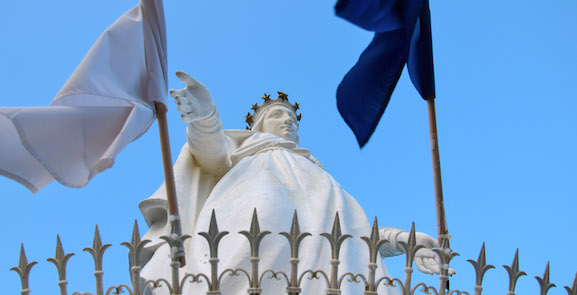
Lebanon continues to recover after the explosion that devastated the port of Beirut on August 4, 2020, killing more than 180 people and injuring 6,500. Thirty years after the end of the civil war, the Land of Cedars remains extremely fragile, with this disaster adding to a long series of tragedies and struggles often linked to external pressures.
However, in the past as today, the Lebanese people have demonstrated their resilience, their ability to bounce back and rebuild. This engine of hope is often rooted in the deep faith of many Lebanese. They turn in prayer to Saint Charbel, whose influence in Lebanon is similar to that of Padre Pio in Italy. Marian devotion also constitutes a strong link of unity between Christians and Muslims, beyond religious divisions.
Many Lebanese have a strong devotion to the Virgin Mary, whose image can be found everywhere: in the streets, inside homes, and of course in the churches and shrines. The multiple tragedies that Lebanon has experienced in the recent past, from the famine of 1915-1918 to the war of 1975-1990, have not prevented the Lebanese from turning to Mary to draw closer to God.
Recent events have highlighted Lebanon’s spiritual anchoring. The trauma of the August 4th explosion remains vivid among the Lebanese population, but many residents of Beirut consider their survival miraculous. The death toll could have been much higher, given the power of the blast. Many claim to have been protected by the Virgin Mary, and even some of those who have been wounded, have lost loved ones or suffered material loss, see Mary as a mediatrix of divine healing and consolation.